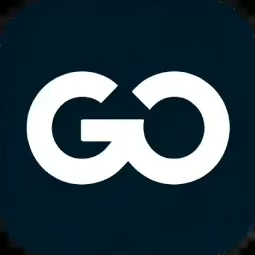In a world where coding often feels like deciphering ancient hieroglyphs, Google has stepped up to the plate with a fresh concept that might just make programming as breezy as a Sunday morning. Enter Opal, the latest vibe coding app that promises to transform the way we think about code, creativity, and perhaps even our sanity. The tech giant is currently testing this intriguing application, and from what we’ve seen so far, it’s not just a flash in the pan.
What Exactly is Vibe Coding?
Vibe coding sounds like something you’d hear at a hipster coffee shop while sipping on an oat milk latte, but it’s actually quite fascinating! Essentially, it’s about capturing the essence of an idea and turning it into functional code without getting bogged down by syntax and structure. Think of it as painting your code on a canvas rather than chiseling it into stone.
With Opal, users can express their ideas in a more fluid way. This could be a game-changer for creatives who have brilliant concepts but may not possess the technical know-how to bring them to life. Google aims to bridge this gap, making programming accessible to anyone with a spark of imagination.
How Does Opal Work?
So how does this magical vibe coding app work? Well, according to insiders (who may or may not be wearing tinfoil hats), Opal utilizes artificial intelligence to interpret natural language input from users. This means instead of typing out tedious lines of [coding](https://www.geekyopinions.com/tag/coding), you might simply describe what you want in everyday language. It’s like having a conversation with your computer – only this time, it actually listens!
The AI behind Opal is designed to understand context and intent. Imagine telling your computer, “I want a website that feels like summer,” and voilà! It starts generating code that embodies that sunny vibe. Pretty neat, right? This approach could democratize coding for everyone from amateur developers to seasoned pros looking for a creative edge.
The Potential Impact of Opal on Coding Culture
Let’s face it: the traditional world of coding can sometimes feel like an exclusive club where only those who have cracked the sacred code can enter. But with Opal shaking things up, we might see a cultural shift in how we view programming. It could very well become a medium for artistic expression.
Imagine artists collaborating with coders using Opal to create interactive installations or musicians crafting unique sound experiences without needing to learn complex programming languages. The possibilities are endless! This could lead to an explosion of creativity across various fields, transforming how we think about technology and art.
Who Will Benefit from Opal?
Now, let’s talk about who stands to gain from this vibe coding revolution. If you’ve ever daydreamed about launching your own app but felt lost in a sea of complex coding tutorials, Opal is your new best friend. Its user-friendly interface will appeal not only to aspiring developers but also educators aiming to teach coding concepts in engaging ways.
- Aspiring Developers: With Opal, those without extensive experience can easily bring their ideas to life.
- Educators: Utilize Opal to make coding lessons more engaging and accessible.
- Businesses: Leverage Opal for rapid prototyping without the need for a dedicated team of developers.
Moreover, businesses could leverage Opal for rapid prototyping and idea validation without needing to hire an entire team of developers at the outset. Why spend weeks writing code when you can whip up an MVP (Minimum Viable Product) in no time? Talk about efficiency!
The Road Ahead for Google’s Opal
As Google continues testing Opal, we’re left wondering what the future holds for this innovative app. Will it live up to the hype? Could it really change the landscape of programming as we know it? Only time will tell! But one thing is for sure: if you’ve ever wished for coding to be more fun and less daunting, keep an eye on Opal.
In conclusion, while some might still cling to their traditional coding ways (and who can blame them?), the emergence of vibe coding through apps like Opal could herald a new era where creativity takes center stage in tech development.
So what do you think? Is vibe coding the future or just another tech fad? We’d love to hear your thoughts! Feel free to share your insights in the comments below.
A huge thank you to TechCrunch for providing such intriguing insights into Google’s latest venture!
Don’t forget to check out our other articles on related tech topics, such as the public betas of Apple’s new software updates or discover lesser-known features in macOS 26. Stay tuned for more updates on the evolving world of technology!

